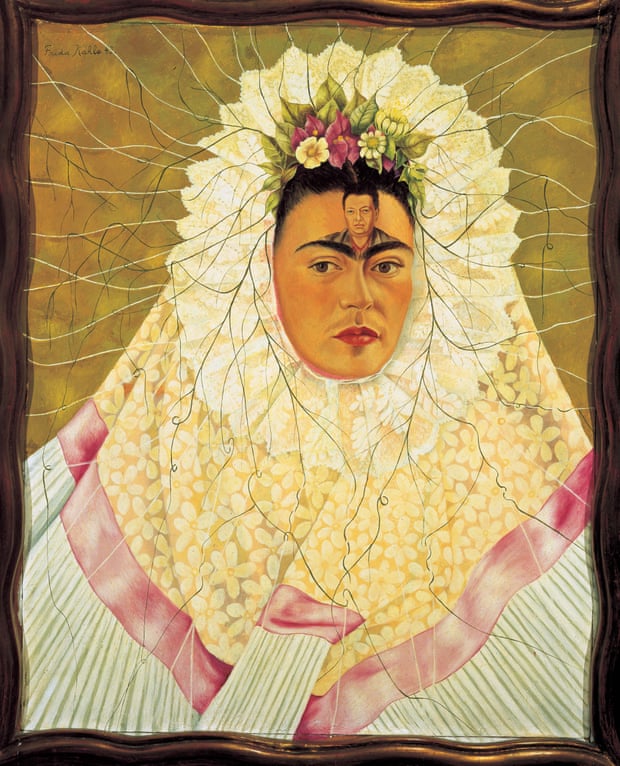The problem, Whitbourne said, is that most of us "mindlessly go about our day's activities,
The problem is I am not conscious of what I do , so I may need to start meditation.
What is the best meditation method?
here are some
Follow your breathing.
Clear your mind.
To meditate, you must focus on one thing maximum
If you're a beginner, it might help to focus on one thing, like a mantra or visual object. More advanced meditators may try to clear their minds completely.
Repeat a mantra. Mantra meditation is another common form of meditation, which involves repeating a mantra (a sound, word or phrase) over and over, until you silence the mind and enter a deep meditative state. The mantra can be anything you choose, as long as it is easy to remember.
Some good mantras to start out with include words like one, peace, calm, tranquil, and silence. If you want to use more traditional mantras, you can use the word "Om" which symbolizes omnipresent consciousness, or the phrase "Sat, Chit, Ananda" which means "Existence, Consciousness, Bliss".
In Sanskrit, the word mantra means "instrument of the mind". The mantra is an instrument which creates vibrations in the mind, allowing you to disconnect from your thoughts and enter a deeper state of consciousness.
Silently repeat the mantra over and over to yourself as you meditate, allowing the word or phrase to whisper through your mind. Don't worry if your mind wanders off, just refocus your attention and return to repeating the word.[3]
As you enter a deeper level of awareness and consciousness, it may become unnecessary to continue repeating the mantra.
Concentrate on a simple visual object. In a similar way to using a mantra, you can use a simple visual object to fill your mind and allow you to reach a level of deeper consciousness. This is a form of open-eye meditation, which many people find easier when they have something to focus their gaze on.
The visual object can be anything you wish, though many people find the flame of a lit candle particularly pleasant. Other possible objects include crystals, flowers, and pictures or statues of divine beings, such as the Buddha.
Place the object at eye level, so you don't need to strain your head and neck to view it. Gaze at it and nothing else, until your peripheral vision starts to dim and the object consumes your vision.
Once you are focused entirely on the object, with no other stimuli reaching your brain, you should feel a sense of profound serenity.[4
Practice visualization. Visualization is another popular meditation technique, which involves creating a peaceful place in your mind and exploring it, until you reach a state of complete calm. The place can be anywhere you like - however, it should not be entirely real, it should be unique and personalized for you.
The place you visualize could be a warm, sandy beach, a flower-filled meadow, a quiet forest or even a comfortable sitting room with a roaring fire. Whatever place you choose, allow it to be your sanctuary.
Once you have entered your sanctuary, allow yourself to explore. There's no need to "create" your surroundings, they are already there. Allow them to come to the forefront of your mind.
Take in the sights, sounds and scents of your surroundings - feel the fresh breeze against your face, or the heat of the flames warming your body. Enjoy the space for as long as you wish, allowing it to naturally expand and become more tangible. When you are ready to leave, take a few deep breaths, then open your eyes.
Know that you can come back to this same place the next time you meditate to visualization, or you can simply create a new space. Any space you create will be unique to you and a reflection of your individual personality.
Do a body scan. Doing a body scan involves focusing on each individual body part in turn and consciously relaxing it. It is a simple meditation technique which allows you to relax the mind as you relax the body.
Close your eyes and pick a starting point on your body, usually the toes. Concentrate on whatever sensations you can feel in your toes, and make a conscious effort to relax any contracted muscles and release any tension or tightness. Once the toes are fully relaxed, move on to your feet and repeat the relaxation process.
Continue along your body, moving upwards from your feet to your calves, knees, thighs, buttocks, hips, abdomen, chest, back, shoulders, arms, hands, fingers, neck, face, ears and top of your head. Take as long as you want.
Once you have completed the relaxation of each individual body part, focus on your body as a whole and enjoy the sensation of calmness and looseness you have achieved. Focus on your breathing for several minutes before coming out of your meditation practice.
Try heart chakra meditation. The heart chakra is one of seven chakras, or energy centers, located within the body. The heart chakra is located in the center of the chest and is associated with love, compassion, peace and acceptance. Heart chakra meditation involves getting in touch with these feelings and sending them out into the world.
To begin, close your eyes and rub the palms of your hands together to create warmth and energy. Then, place your right hand on the center of your chest, over your heart chakra, and place the left hand on top.
Take a deep breath and as you exhale, say the word "yam", which is the vibration associated with the heart chakra. As you do this, imagine a glowing green energy radiating from your chest and into your palms.
This green energy is love, life and whatever other positive emotions you are feeling at that moment. When you are ready, take your hands from your chest and allow the energy to escape from your palms, sending your love to your loved ones and the world.
Feel your body from the inside. Can you feel the energy field in your body, especially in your arms and legs? If you don't feel it, it's fine. But think: How are we able to move different parts of the body? It's the energy field that flows in our body. Focusing your attention on that energy field will not only help you stay in the present but also will help you connect with your Being and flow of life in you.
Try walking meditation. Walking meditation is alternate form of meditation which involves observing the movement of the feet and becoming aware of your body's connection to the earth. If you plan on performing long, seated meditation sessions, it is a good idea to break them up up with some walking meditation.
Choose a quiet location to practice your walking meditation, with as few distractions as possible. The space doesn't need to be very large, but you should be able to walk at least seven paces in a straight line before needing to turn around. Remove your shoes, if possible.
Holding your head up with your gaze directed straight ahead, and your hands clasped together in front of you. Take a slow, deliberate step with your right foot. Forget about any sensations or feelings in the foot and try to concentrate on the movement itself. After taking the first step, stop for a moment before taking the next. Only one foot should be moving at any given time.
When you reach the end of your walking path, stop completely, with your feet together. Then, pivot on the right foot and turn around. Continue walking in the opposite direction, using the same slow, deliberate movements as before.
While practicing walking meditation, try to focus on the movement of the feet and nothing else, in the same way that you focus on the rising and falling of your breath during breathing meditation. Try to clear your mind and become aware of the connection between your foot and the earth below.
1
Practice mindfulness in your everyday life. Meditation doesn't have to be limited to strictly defined practice sessions, you can also practice mindfulness throughout your day to day life.
For example, in moments of stress, try to take a few seconds to focus solely on your breathing and empty your mind of any negative thoughts or emotions.
You can also practice mindfulness while you eat, becoming aware of the food and of the sensations you experience as you eat.
No matter what actions you perform in your day to day life, whether it's sitting at a computer or sweeping the floor, try to become more aware of your body's movements and how you feel in the present moment. This is living mindfully.[5]
Yawn and stretch for 10 seconds every hour.
Do a fake yawn if you have to. That will trigger real ones. Say “ahh” as you exhale. Notice how a yawn interrupts your thoughts and feelings. This brings you into the present.
Then stretch really, really slowly for at least 10 seconds. Notice any tightness and say “ease” or just say hello to that place (being mindful — noticing without judgment). Take another 20 seconds to notice and then get back to what you were doing.
Hug someone tight and take 3 big breaths together. Even if they don’t breathe with you, your breathing will ground them
Lower or close your eyes. Take the index finger of your right hand and slowly move it up and down on the outside of your fingers. Once you have mindfully stroked your left hand, swap and let your left hand stroke the fingers of your right hand.
Take a raisin or a piece of chocolate and mindfully eat it. Slow down, sense it, savor it and smile between bites. Purposefully slow down. Use all your senses to see it, touch it, smell it, and sense it.
Then gently pop it into your mouth and really savor it. Savor its texture, its taste, how it feels in your mouth. Let it linger and then swallow it. After you have swallowed it, let your lips turn up slightly and smile. Do the same thing for each raisin you eat or bite you take.
Position your fingers and thumbs facing down. Now clench your fist tightly. Turn your hand over so your fingers and thumbs are facing up and breathe into your fist. Notice what happens.
Stand up and breathe. Feel your connection to the earth.
Tune in to your body. Lower your gaze. Scan your body and notice physical sensations or emotions. Discharge any unpleasant sensations, emotions or feelings on the out breath. Notice any pleasant ones and let them fill you up on the in breath.
Observe. Lift your eyes and take in your surroundings. Observe something in your environment that is pleasant and be grateful for it and its beauty.
Possibility. Ask yourself what is possible or what is new or what is a forward step.
If you find yourself being reactive, try the following steps:
Pause and take one to three big breaths.
Say “step back.” ( You don’t have to physically step back, you can just do it in your mind.)
Say “clear head.”
Say “calm body.”
Breathe again. Say “relax,” “melt” or “ease.”
Pause and take one to three big breaths.
Say “step back.” ( You don’t have to physically step back, you can just do it in your mind.)
Say “clear head.”
Say “calm body.”
Breathe again. Say “relax,” “melt” or “ease.”
Lower your eyes and notice where you feel your breath. That might be the air going in and out at your nostrils or the rise and fall of your chest or stomach. If you can’t feel anything, place your hand on your stomach and notice how your hand gently rises and falls with your breath. If you like, you can just lengthen the in breath and the out breath or just breathe naturally. Your body knows how to breathe.
Focus on your breath. When your mind wanders, as it will do, just bring your attention back to your breath. You might like to say ‘thinking’ when you notice your thoughts and just gently shepherd your attention back to your breath.
This can be done for longer than one minute. However, even for one minute it will allow you to pause and be in the moment. Or you might just like to breathe out stress on the out breath and breathe in peace on the in breath.
For one minute, repeat ‘May I be happy, may I be well, may I be filled with kindness and peace.’ You can substitute “you” for “I” and think of someone you know and like, or just send love to all people.
Decide on an aspiration. Just ask yourself this question: What is my heart’s aspiration? Pause for about 20 seconds. Do this a second or third time and write down what comes. Perhaps it is to come from love, or to be kind to yourself or others or to be patient.
Once you decide which aspiration you like best, say that at the beginning of the day. This will set you up for your day and your interactions with others (and even with yourself).








